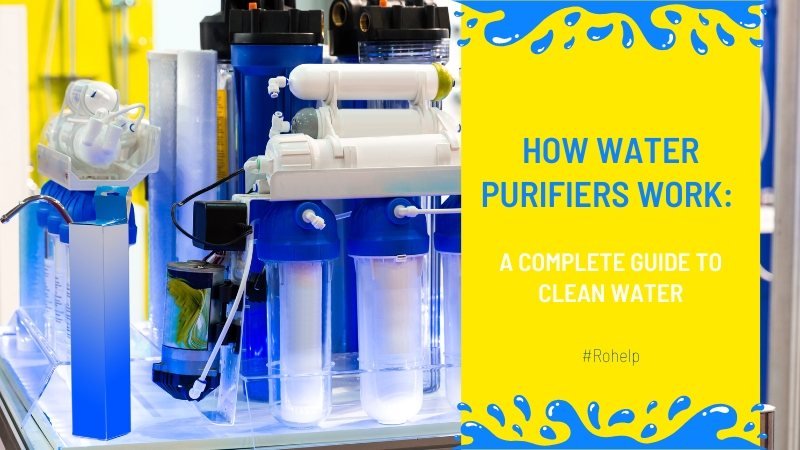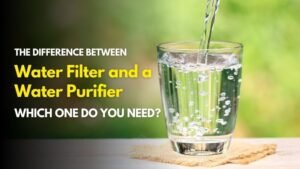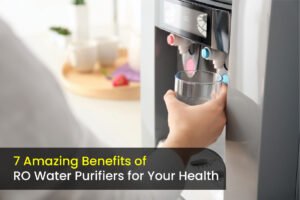In a world where access to clean water is increasingly becoming a luxury rather than a basic right, understanding how water purifiers work has never been more crucial. From bustling cities to remote villages, the quest for safe, potable water is a universal challenge. But fear not! This comprehensive guide will quench your thirst for knowledge about water purification systems, empowering you to make informed decisions about your water consumption and health.
Introduction: The Importance of Water Purification
Imagine turning on your tap and not knowing if the water flowing out could make you sick. For millions around the world, this isn’t imagination—it’s reality.
The global water crisis affects nearly 2 billion people who lack access to safely managed drinking water. This stark fact underscores why clean water matters so much for our health and well-being.
But what exactly makes water “clean”? And how do we transform contaminated water into something safe to drink? The answers lie in the fascinating world of water purification systems. These technological marvels are our front-line defense against a host of waterborne threats, from microscopic pathogens to industrial pollutants.
As we dive deeper into the intricacies of how water purifiers work, we’ll explore the evolution of purification technologies, from ancient methods to cutting-edge innovations. Recent advancements include nanotechnology for efficient filtration, acoustic nanotube technology that uses sound waves for purification, and photocatalytic systems that utilize UV light to break down harmful substances.
Additionally, biomimetic approaches like Aquaporin Inside Technology enhance filtration by allowing only water to pass through specialized membranes.
Whether you’re a homeowner considering a new water filtration system, an environmentally conscious individual curious about sustainable water solutions, or simply someone who wants to understand what happens between the water source and your glass, this guide is your comprehensive resource. Let’s embark on this enlightening journey through the world of water purification!
Understanding Water Contamination
Before we can appreciate how water purifiers work, we need to understand what they’re up against. Water contamination comes in various forms, each posing unique challenges to our health and the purification process.
- Physical Contaminants: These are the particles you can often see with the naked eye. They include sediment, soil, and organic material suspended in the water.
- Chemical Contaminants: Often invisible and odorless, these include pesticides, metals, nitrogen, and bleach. They can be naturally occurring or introduced through industrial and agricultural processes.
- Biological Contaminants: Also known as microbiological contaminants, these include bacteria, viruses, protozoa, and parasites. They’re often responsible for waterborne diseases.
- Radiological Contaminants: These are chemical elements with an unbalanced number of protons and neutrons, resulting in radiation. While less common, they can be found in areas with natural deposits or due to human activities.
Common Sources of Water Pollution
Water pollution can originate from various sources:
- Industrial discharge
- Agricultural runoff
- Sewage and wastewater
- Natural sources (e.g., arsenic-rich rock formations)
- Urban runoff
- Air pollution that settles into water bodies
Understanding these contaminants and their sources is crucial in appreciating the complexity of water purification systems and how they work to combat these diverse threats.
The Evolution of Water Purification
The quest for clean water is as old as civilization itself. Let’s take a quick journey through time to see how water purification has evolved.
Historical Methods of Water Purification
Ancient civilizations used various methods to purify water:
- Boiling: One of the oldest and most effective methods.
- Filtration: Using sand and gravel to remove particles.
- Sunlight exposure: Using UV rays to disinfect water.
Charcoal: Ancient Egyptians used charcoal to absorb contaminants.
Modern Advancements in Purification Technology
Fast forward to today, and we have a suite of advanced technologies at our disposal:
- Reverse Osmosis (RO)
- Ultraviolet (UV) Disinfection
- Ultra-Filtration (UF)
- Activated Carbon Filtration
- Ion Exchange
These modern methods form the backbone of how water purifiers work today, each playing a crucial role in delivering safe, clean water.
Core Technologies in Water Purification Systems
Now, let’s dive into the heart of modern water purification systems. Understanding these core technologies will give you a clear picture of how water purifiers work step by step.
1. Reverse Osmosis (RO): The Molecular Sieve
Reverse Osmosis is like a superhero in the world of water purification, capable of removing up to 99% of all contaminants. But how does it work?
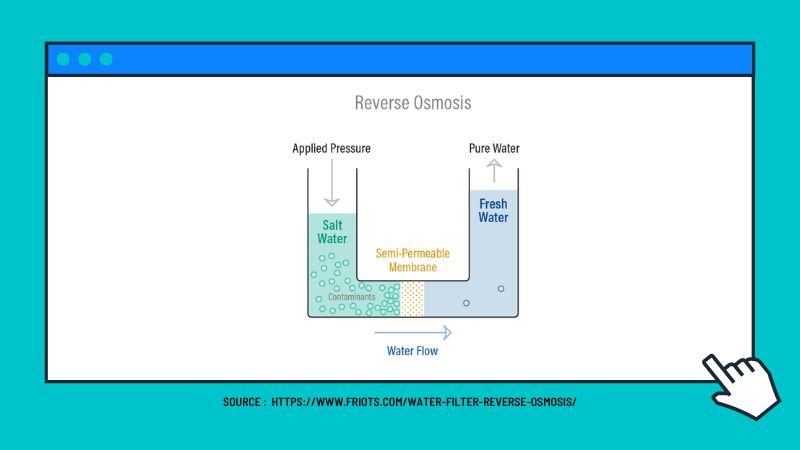
The Science Behind Reverse Osmosis
At its core, RO works by pushing water through a semi-permeable membrane under high pressure. This membrane has tiny pores that allow water molecules to pass through but block larger molecules like dissolved salts, bacteria, and other contaminants.
Components of an RO System
- Pre-filters: Remove larger particles to protect the RO membrane.
- RO membrane: The heart of the system where the actual purification occurs.
- Storage tank: Holds the purified water.
- Post-filters: Further refine the taste and quality of the water.
- Drain line: Removes the concentrated contaminants.
Advantages and Limitations of RO
Advantages:
- Highly effective at removing a wide range of contaminants
- Improves taste and odor of water
- Low maintenance
Limitations:
- Can waste water during the process
- Removes beneficial minerals along with contaminants
- Requires sufficient water pressure to operate effectively
2. Ultraviolet (UV) Disinfection: Light vs. Microbes
UV disinfection is nature’s way of purifying water, harnessed and amplified by technology.
How UV-C Rays Neutralize Pathogens
UV-C light, with a wavelength of 254 nanometers, penetrates the cell walls of microorganisms, disrupting their DNA and rendering them unable to reproduce or infect.
The UV Purification Process
- Water enters the UV chamber.
- It’s exposed to UV-C light from a specialized lamp.
- Microorganisms in the water are inactivated.
- The now-disinfected water exits the chamber.
Benefits of UV Disinfection Over Chemical Methods
- No chemicals added to the water
- No change in taste or odor
- Effective against chlorine-resistant pathogens
- Low maintenance and operating costs
3. Ultra-Filtration (UF): The Microscopic Barrier
Ultra-Filtration takes mechanical filtration to the next level, operating on a molecular scale.
Understanding the UF Process
UF uses a membrane with pores sized around 0.01 micron. It relies on hydrostatic pressure to force water through this membrane, effectively removing particles, bacteria, and even some viruses.
Applications and Efficiency of UF Systems
UF is highly effective for:
- Removing turbidity
- Eliminating bacteria and protozoa
- Reducing viruses
It’s often used in conjunction with other purification methods for comprehensive water treatment.
4. Activated Carbon Filtration: The Taste Enhancer
Activated carbon is the unsung hero of water purification, significantly improving the taste and odor of water.
The Adsorption Process Explained
Activated carbon works through adsorption, where contaminants are attracted to and held on the surface of the carbon particles. This process is particularly effective for organic compounds, chlorine, and volatile organic compounds (VOCs).
Types of Activated Carbon Filters
- Granular Activated Carbon (GAC)
- Carbon Block Filters
What Activated Carbon Removes (and What It Doesn’t)
Removes:
- Chlorine
- Pesticides
- Herbicides
- Trihalomethanes (THMs)
- Many organic compounds
Doesn’t Remove:
- Dissolved minerals
- Nitrates
- Bacteria
5. Ion Exchange: Battling Hard Water
Ion exchange is the go-to technology for dealing with hard water and dissolved minerals.
The Science of Ion Exchange
This process involves exchanging ions in the water with ions on a resin bed. Typically, calcium and magnesium ions (which cause hardness) are exchanged for sodium or potassium ions.
Water Softening vs. Deionization
- Water Softening: Replaces hardness minerals with sodium.
- Deionization: Removes all ions, producing highly purified water.
Applications in Industry and Home Use
Ion exchange is widely used in:
- Home water softeners
- Industrial water treatment
- Laboratory water purification
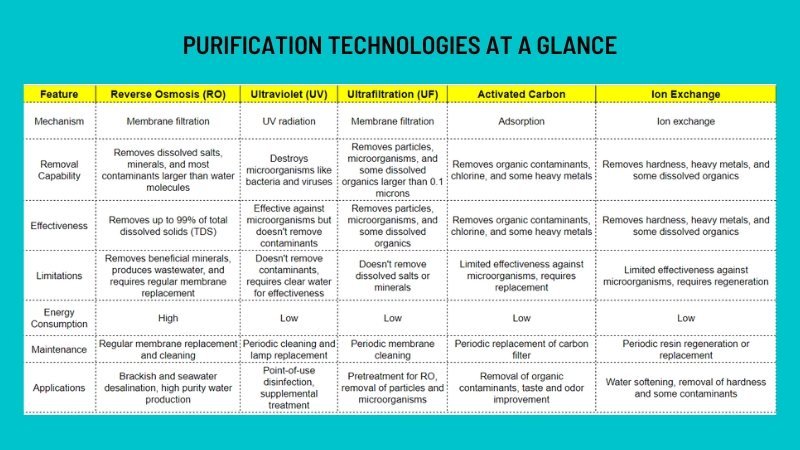
Multi-Stage Purification: Combining Technologies for Optimal Results
In the real world, no single purification method can address all water quality issues. That’s where multi-stage purification comes in.
Why Multi-Stage Purification is Necessary
Different contaminants require different removal methods. By combining technologies, we can create a comprehensive barrier against a wide range of water quality issues.
Popular Combinations
- RO + UV: RO removes dissolved solids and most microorganisms, while UV provides an additional safeguard against any surviving pathogens.
- UF + UV: UF removes particles and most bacteria, while UV ensures disinfection.
- Activated Carbon + RO: Carbon pre-treatment protects the RO membrane and improves taste.
Designing an Effective Multi-Stage System
The key is to understand your water source and target contaminants. A typical multi-stage system might include:
- Sediment pre-filter
- Activated carbon filter
- RO or UF membrane
- UV disinfection
- Post-filter for taste enhancement
The Purification Process: From Source to Tap
Now that we understand the core technologies, let’s walk through the typical journey water takes in a purification system.
- Pre-filtration: Large particles are removed using sediment filters.
- Primary filtration: Specific contaminants are targeted using methods like activated carbon or ion exchange.
- Secondary filtration: Fine-tuning water quality, often with RO or UF.
- Disinfection: Ensuring microbiological safety, typically with UV treatment.
- Post-treatment: Enhancing taste and possibly remineralizing the water.
Choosing the Right Water Purification System
Selecting the right purification system depends on several factors:
Factors to Consider
- Source water quality
- Specific contaminants present
- Daily water consumption needs
- Budget and maintenance considerations
Comparing Different Types of Systems
- Point-of-use vs. point-of-entry systems: Treating water at a single tap or for the entire house.
- Under-sink vs. countertop purifiers: Space considerations and installation requirements.
Whole-house filtration systems: Comprehensive solutions for all water uses.
Maintaining Your Water Purification System
Proper maintenance is crucial for the longevity and effectiveness of your purification system.
Regular Maintenance Tasks
- Checking and replacing filters
- Cleaning storage tanks
- Inspecting for leaks
Filter Replacement Schedules
This varies by system but typically includes:
- Sediment filters: Every 3-6 months
- Carbon filters: Every 6-12 months
- RO membranes: Every 2-3 years
Sanitization Procedures
Periodic sanitization of the system, especially for RO units, helps prevent bacterial growth.
Troubleshooting Common Issues
- Low water pressure
- Unusual tastes or odors
- Slow filtration rate
The Environmental Impact of Water Purification
While purification systems provide clean water, they’re not without environmental considerations.
Water Waste in Purification Processes
RO systems, in particular, can waste significant amounts of water. Some modern systems are designed to be more efficient.
Energy Consumption of Purification Systems
Different systems have varying energy requirements. UV systems, for instance, require constant power to operate.
Sustainable Practices in Water Purification
Water recycling in RO systems
Solar-powered UV purifiers
Using eco-friendly filter materials
Future Trends in Water Purification Technology
The field of water purification is constantly evolving. Here are some exciting developments to watch:
Nanotechnology in Water Filtration
Nanotech materials promise more efficient filtration with less waste.
Smart Purifiers and IoT Integration
Connected devices that can monitor water quality and system performance in real-time.
Renewable Energy-Powered Purification Systems
Solar and wind-powered systems making clean water accessible in remote areas.
Conclusion: Empowering Consumers with Clean Water Solutions
Understanding how water purifiers work is the first step in taking control of your water quality. Whether you’re concerned about specific contaminants, looking to improve taste, or aiming for the highest purity, there’s a solution out there for you.
Remember, clean water is not just about health—it’s about quality of life. By making informed decisions about water purification, you’re not just protecting yourself and your family; you’re contributing to a more sustainable and water-secure future for all.
As we face growing water challenges globally, let’s embrace the power of knowledge and technology to ensure that clean, safe water is not a privilege, but a right accessible to everyone.
FAQs About Water Purification Systems
Consider getting your water tested. If you notice odd tastes, odors, or have concerns about your local water quality, a purification system might be beneficial.
Filtration typically removes larger particles and some contaminants, while purification aims to remove or inactivate all harmful substances, including microorganisms.
While highly effective, no single system can remove 100% of all contaminants. Multi-stage systems come closest to achieving this goal.
It varies by system and water quality. Generally, pre-filters need replacement every 3-6 months, while RO membranes can last 2-3 years.
Some systems, particularly RO, can remove beneficial minerals. Many modern systems include remineralization stages to address this.
High-quality home systems can produce water that’s as good as or better than most bottled water, often at a fraction of the cost and environmental impact.
While some systems waste water or use energy, they generally have a lower environmental impact than bottled water alternatives.
RO removes dissolved solids, UV disinfects by inactivating microorganisms, and UF physically removes particles and some microorganisms.
Some countertop and under-sink systems are DIY-friendly. Whole-house systems typically require professional installation.
Maintenance costs vary but typically include filter replacements and occasional servicing. Annual costs can range from $50 to $200 for most home systems.

